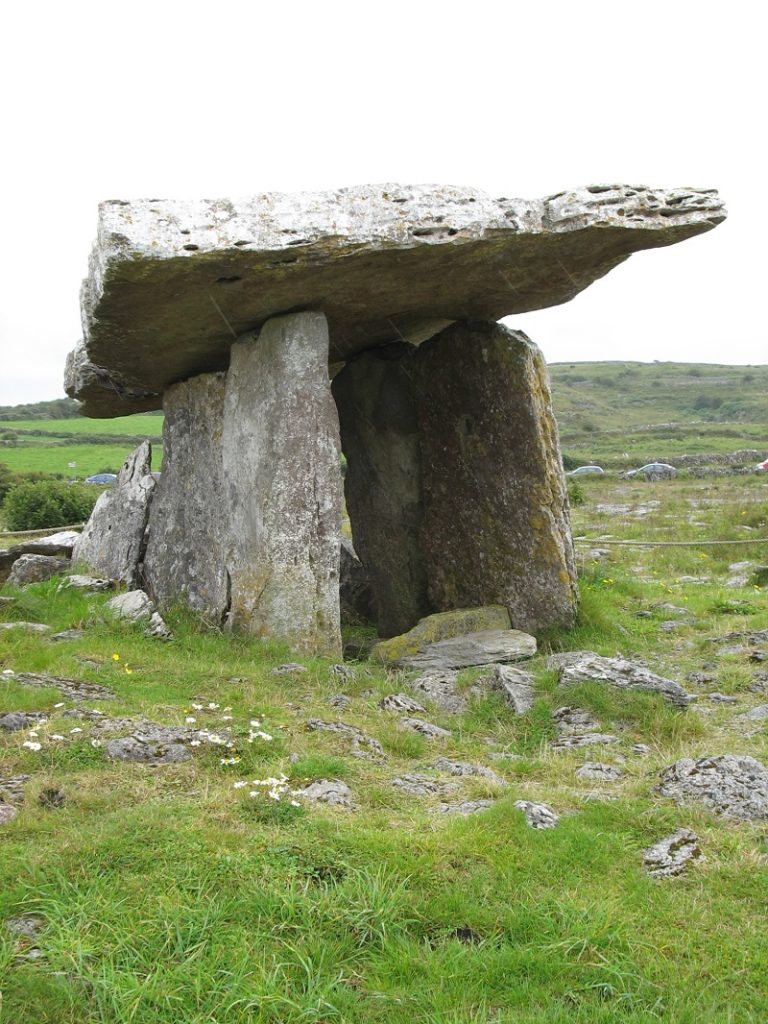Styles of Prehistoric Tombs in Ireland:
Prehistoric tombs in Ireland are megalithic stone structures that are believed to have been part of the burial ritual. Cremated remains of men, women and children have been found within these sites, along with shards of pottery, stone beads, bone pins, and other personal items. I’ve read of 4 types in Ireland: Passage Tombs, Dolmens (Portal Tombs), Court Tombs and Wedge Tombs, each with slightly different styles but typically sharing one feature – massive stones positioned to form a chamber and often covered by a carefully arranged pile of stones (the cairn). Over time, many of the cairns have disappeared, leaving a skeletal stone structure behind.
Passage tombs include a narrow, low passage which leads you to the chamber. Tombs of similar design and decoration can be found in the Brittany region of France, which suggests the practice started in France and crossed to Ireland. Passage tombs are generally found on high ground and there are believed to be around 300 in Ireland, mostly in the northern half of the island.
Portal tombs, or dolmens, were built kind of like a stone box, with a large slab sitting perpendicular on top of supporting upright slabs. More than 150 portal tombs are believed to be in Ireland, also mostly found in the northern half like passages tombs. Unlike passage tombs, however, portal tombs tend to be in lowland areas and valleys and many are close to rivers. Once the cairns were lost, the dolmen would have been exposed to the elements, so not many artifacts are often found in them. Archaeologists have found evidence which suggests some capstones were quarried directly from the bedrock below, then raised with levers and braced underneath until the desired height was reached and the support stones could be set in place.
Court tombs have a more intricate design, often starting with a rounded courtyard lined with stones. From one end of the courtyard extends a chamber, beyond which there could one or more chambers connected to it in a series of galleries. Each chamber would have had its own roof stone, though few survive today. There are over 300 court tombs in Ireland, also mostly in the northern half, and particularly in the northwest.
Wedge tombs are similar in design to dolmens but a bit squashed and get their names from the sloping direction the roof exhibits from front to back. Wedge tombs are found in central and southern Ireland, particularly in the limestone area known as The Burren.
Post Sources:
[bg_collapse view=”link” color=”#4a4949″ icon=”arrow” expand_text=”Show More” collapse_text=”Show Less” ]
Current Archaeology. (6 January, 2014). “How to Build Dolmen“. Accessed 4 May 2021.
Fr. Michael O’Flanagan History & Heritage Centre. Listoghil-Carrowmore 51. Accessed 4 May 2021.
Cochrane, A. (October 2006) “Irish Passage Tombs” Cardiff University PhD Thesis. Accessed 4 May 2021.
World Heritage Ireland. “Bru na Boinne: Built Heritage” Accessed 4 May 2021.
O’Nuallain, S. (1979) “The Megalithic Tombs of Ireland” Expedition Magazine 21.3. Accessed 5 May 2021
[/bg_collapse]
Passage Tombs
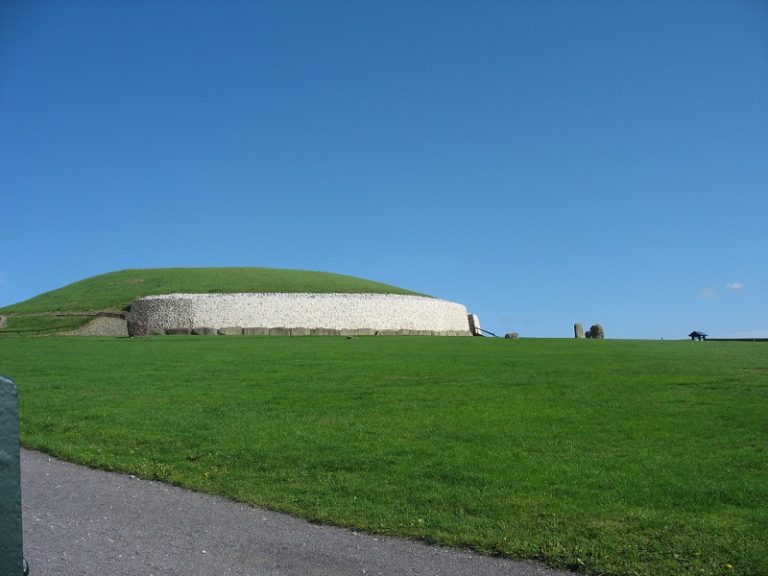
Newgrange, the most famous of the Irish passage tombs, dates to 3200 BC which makes it older than Stonehenge or the Great Pyramids of Egypt (which is true for many of the sites listed here)! Nearly 100 massive granite boulders each about the size of a Smart car surround the base of the site, which is 260 ft (80m) in diameter. The use of these boulders is a distinct Irish passage tomb feature.
The effort it would have taken to transport all this stone is hard to fathom. Even more impressive, the stones are highly carved with elaborate decorations which have spawned entire careers of study and interpretation. Many designs were circular or spiral, but there are also triangles, chevrons and sunburst patterns.
Brilliant white quartz stones cover the front half of the tomb, and it absolutely gleams in the sun. Through the entrance, a 60-foot long (19m) passage leads to a single burial chamber. 5′ 11″ me had to stoop to get through the passage, but the burial chamber is nearly 20 ft (6m) high, so standing upright once you get inside is not a problem. The chamber is built with overlapping stones topped with a capstone and after 5000 years it remains waterproof!
Inside the chamber are basin stones which held cremated remains. The passage aligns with the sunrise on the winter solstice (December 21st) and for a few days before and after the solstice, the sunrise illuminates the chamber in a flood of light.
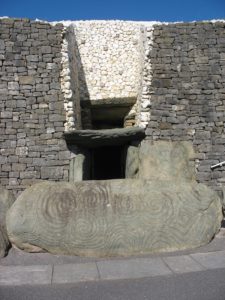
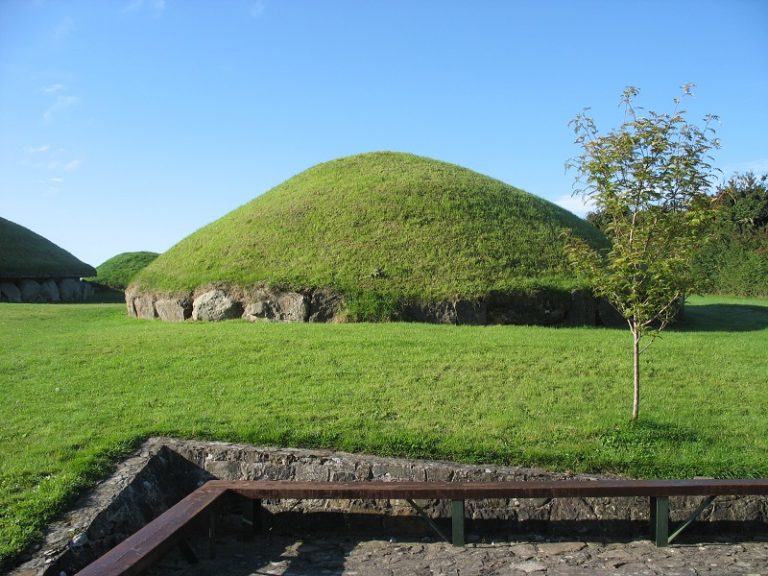
Knowth is another group of passage tombs in the same area as Newgrange. The entire Bru na Boinne complex, which includes a third group of tombs known as “Dowth”, is a UNESCO World Heritage Site. There are 19 mounds at Knowth, the largest one actually contains two separate passages which do not connect inside the mound.
Knowth is “younger” than Newgrange, with evidence showing people lived here around 2300 BC. Soon after this period, however, people appear to have abandoned the site for about 2000 years, but burials start up again in the early centuries AD.
Carrowmore Megalithic Cemetery
Carrowmore is located southwest of Sligo town and today encompasses a complex of 30 burial different monuments. The site has been extensively studied, but also damaged by quarrying that was allowed in the early 19th century. In 1837 there were more than double the current number of monuments recorded at the site.
When I visited in 2009, the small visitor center was still closed for the season (it was early spring) but the site itself was open and easily accessible by foot. The central structure is a passage tomb cataloged as number “51” and known as Listoghil. Other monuments at the site are arranged in a large oval pattern around Listoghil and many of those have smaller chambers whose passages are aligned towards Listoghil.
It was excavated and restored in the 1990’s and a wide passage was installed to access the inner chamber. The burial chamber inside the monument is the largest at Carrowmore and was built around 3600 BC. Six stones form the walls of the chamber, and a flat, square, 9 ft x 9 ft, 10 ton limestone capstone sits on top.
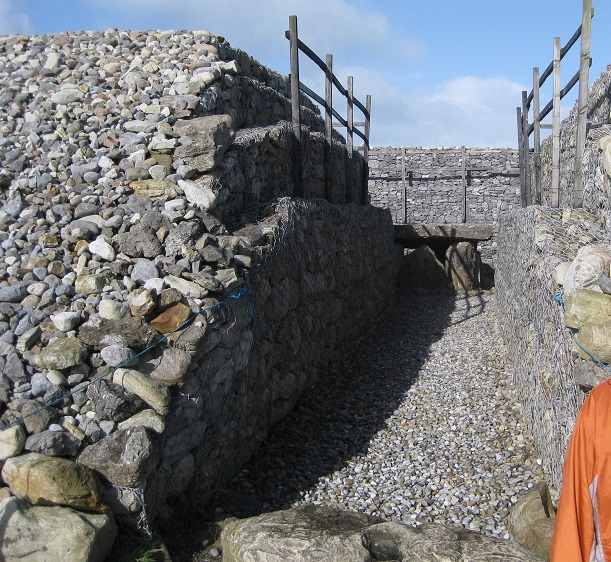
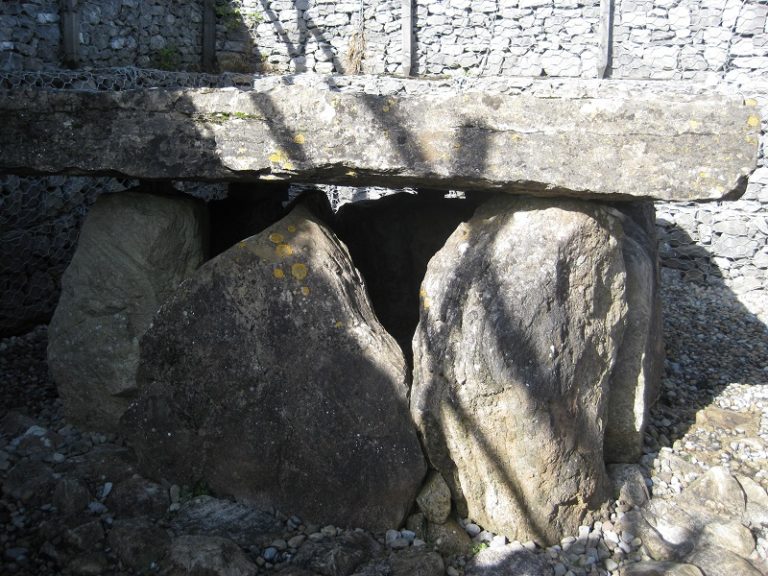
Portal Tombs (Dolmens)
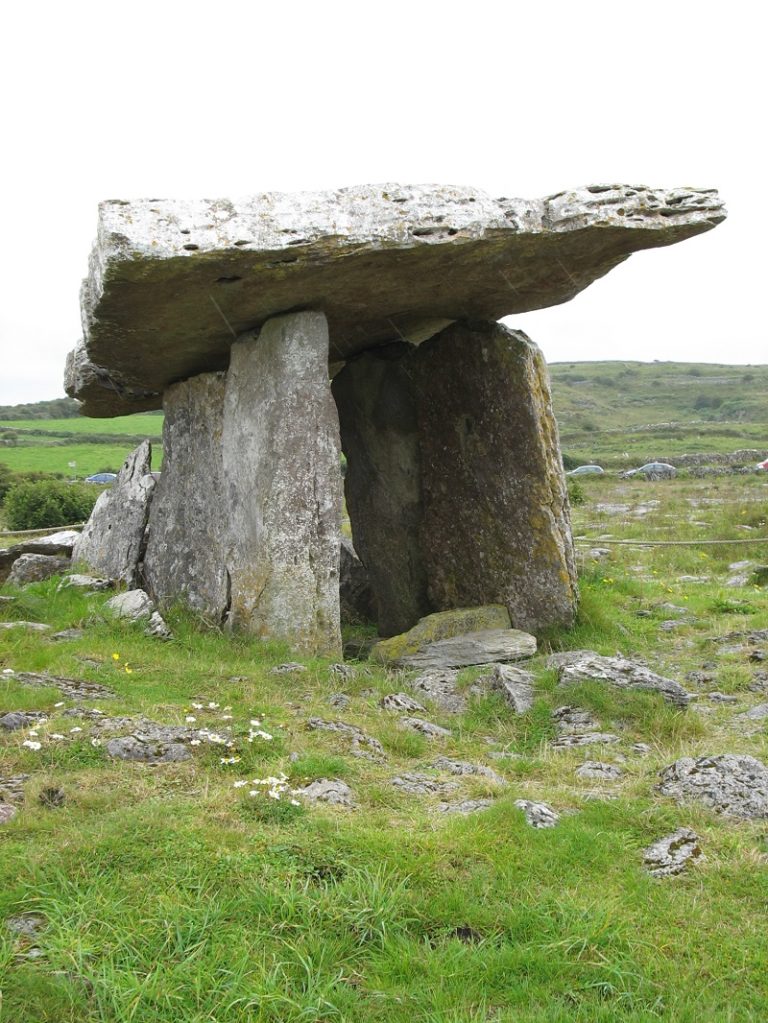
Poulnabrone is very impressive, and it is roped off to discourage you from getting too close. This is one of the few portal tombs that has been excavated, and the informational panel at the site dates the remains found to the period of 4200-2900 BC. It is also built on top of a man-made mound of loose stones, which helped to stabilize the upright slabs and also lifted the tomb up to create a more commanding presence.
Poulnabrone is localted in The Burren area of County Claire on the R480. It is well signed and there is quite a bit of parking.
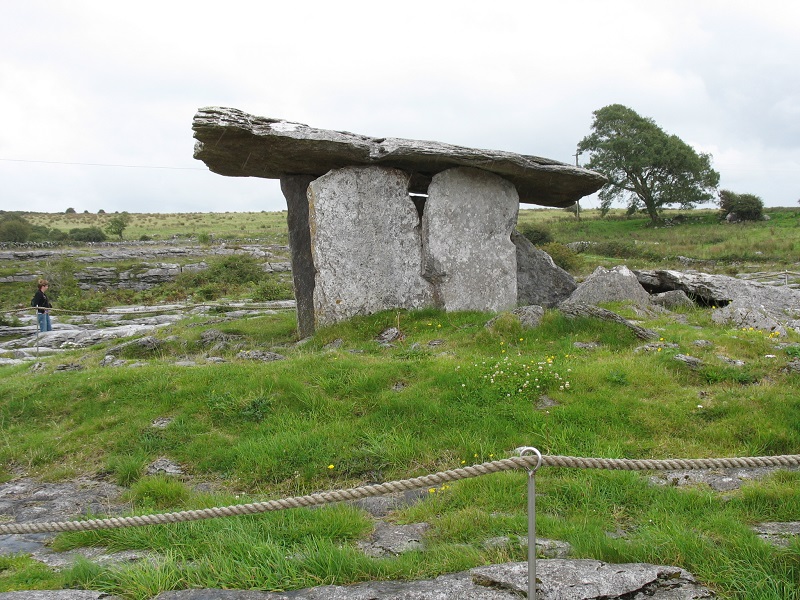
The Brownshill Portal Tomb in Co. Carlow has the largest capstone of any known in Europe, weighing in at 160 tons (350,000 lbs)! One paper I read believes the capstone never was fully lifted into place; likely the builders miscalculated how much they could lift and it was left in the unfinished position you see today. Unlike Poulnabrone, you can walk right up to this one.
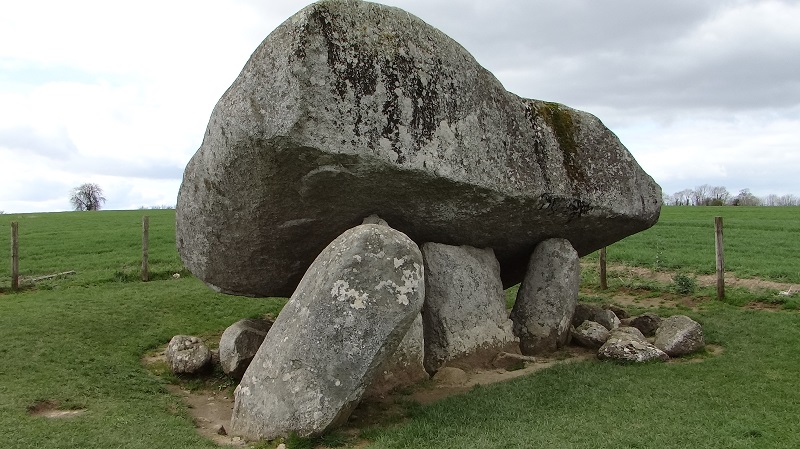
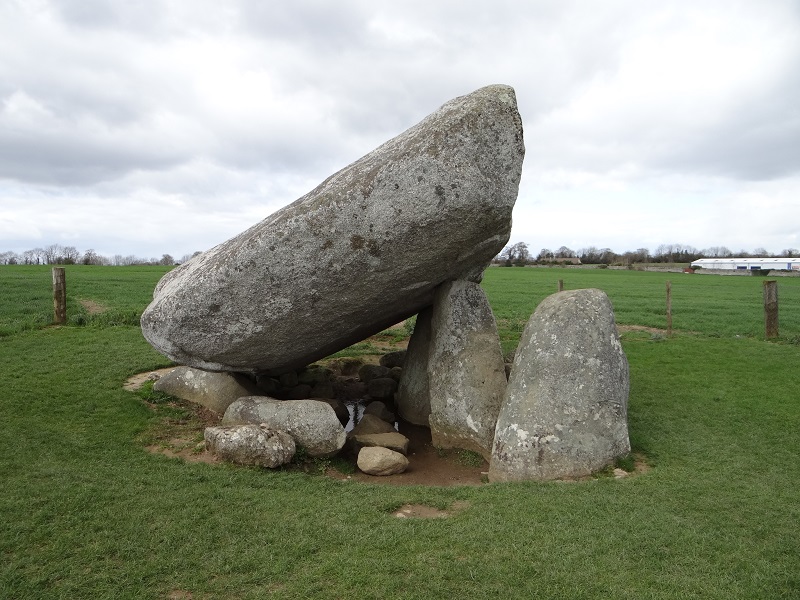
Planning a visit to Brownshill? The site is open to access freely and there is some parking available alongside the R726 road. The dolmen is set back from the road, but there is a sign and a flat, paved walkway that leads from the parking site.
Court Tomb
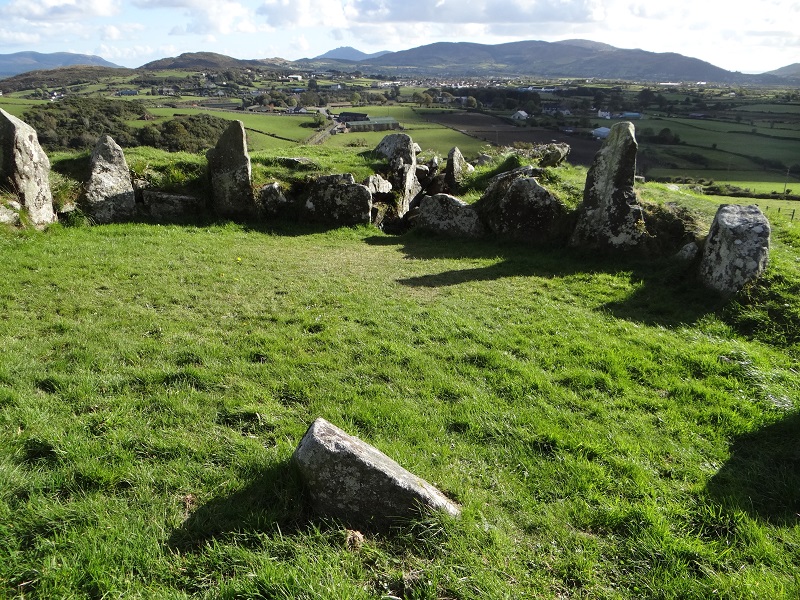
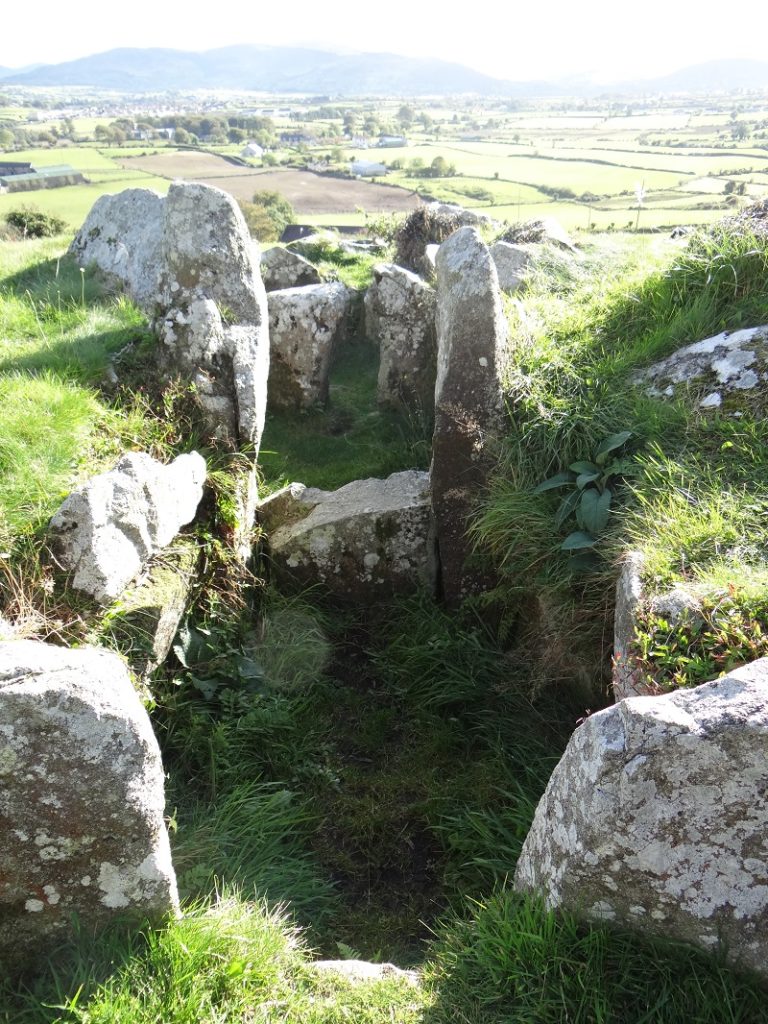
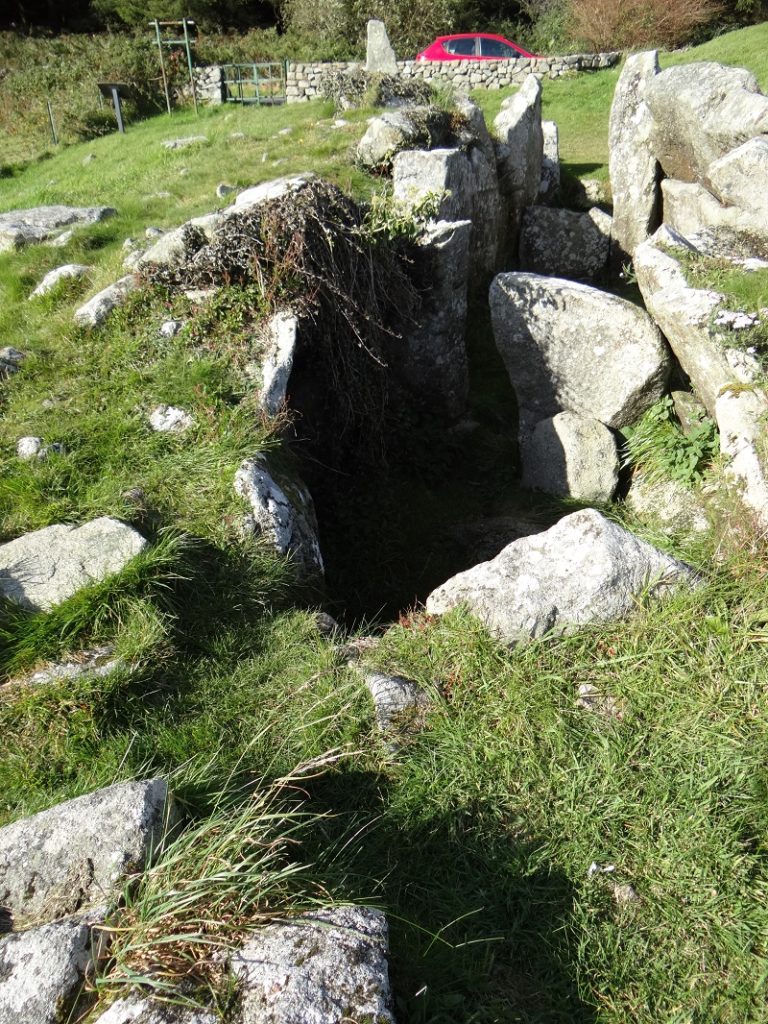
The only court tomb I’ve visited is the one at Ballymacdermot near Newry in Northern Ireland. This tomb dates from about 3500 BC and has three separate burial chambers, which is rare for Ireland, and this is one of the best preserved court tombs in Ireland. The local tourism board website has a very cool 3D rendering that gives you a great aerial perspective of the site. It also reports there is a second court tomb nearby, Clontygora, which looks pretty amazing. I’ll have to check it out next time!
Planning a visit to Ballymacdermot? The site is well maintained and self-service. There is parking for a few cars but it is a bit more remote, so you’re unlikely to stumble across it on your own. It is marked on Google maps, or use the GPS coordinates of 54.15425, -6.36978. This is a gorgeous part of Ireland – plan to spend extra time here!
Wedge Tombs
Fire Up the Time Machine!
As I was researching this post, I realized I have never been to one of the hundreds of wedge tombs in Ireland! Put this on the list for the next trip! Possible contenders: the Burren is ripe with them - 20 can be found within 1-2 miles of Poulnabrone.

